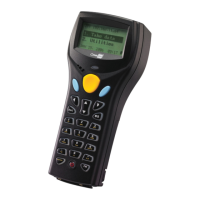149
There are many file manipulation commands available for programming the mobile
computers. These commands help manipulate the transaction data and ease the
implementation of database system.
Two types of file structures are supported -
Sequential structure called DAT file that is usually used to store transaction data.
Index structure is usually used to store lookup data. Actually, there are two types of
index file. One is DBF for storing the original data records (data members), and the
other is IDX for sorting the records according to the associate key.
Below are the commands applicable to both types of files, DAT and DBF files (with
associated IDX files).
This one has a sequential file structure, which is much like the ordinary sequential file but
is modified to support FIFO structure. We call this type of file as DAT file. Because DAT
files are usually used to store transaction data, they are also referred to as Transaction
files.
Note: (1) The length of each record in the transaction file is limited to 255 bytes.
(2) For mobile computers, a BASIC program can have up to 6 transaction files.

